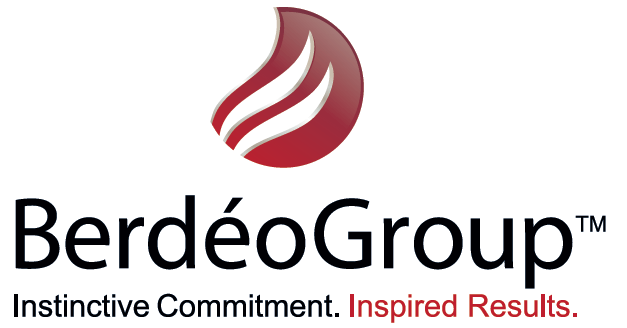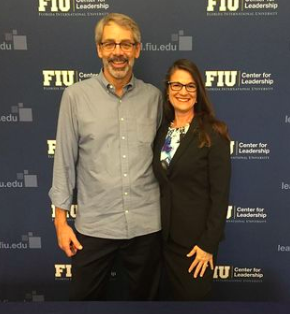Use design thinking to chart your course at any stage of life.
“What is it you plan to do with your one wild and precious life?” – Mary Oliver
You are a highly intelligent, dynamic and creative being (yes, you!), and the idea that you have just one purpose and path in life is, well, absurd. In fact, going through transitions and asking yourself what’s next is a sign that you are fully awake.
When a client expresses a desire to change careers, my mission is to start moving them toward that new destination. They’ll often find reasons to abort the mission, declaring things like, “I’m too old, too busy, or too inexperienced for that position.” It is normal for insecurities to surface amid a significant life change. Unraveling them and reframing the negative thought patterns from which they originate is where I step in.
One of the first steps to changing your life is cultivating self-awareness. And the questions we ask ourselves often shape our self-perception. If fear and self-doubt are holding you hostage, you’ve probably asked yourself questions like, “I’m too old, aren’t I?” or, “I’m not smart enough for medical school, am I?” Reframe your thinking by instead asking yourself, “What careers have my experience and expansive knowledge primed me for?” and “How will I succeed in medical school?” This approach allows you to move forward instead of looking back.
If you are asking the question, “I’m too old, aren’t I?” remember there is no rule book which defines the age for slowing down. For some, it’s 75. For others, retiring just isn’t for them. Wherever you are in life, refuse to wait on changing the things, even your career, that do not fulfill you.
Dave Evans, co-author of Designing Your Life: How to Live a Well-Lived, Joyous Life, sat with me for a conversation and asserts, “You have become a much richer version of yourself [who’s] not done yet, by the way. You’re not getting older. You’re getting bigger,” He is a young 65 and says, “There’s not enough money in the world to get me to go back and be 35.” So, if you are 55 and still holding onto the you from decades ago, let her go. You won’t abandon your dream of being a psychologist – you just won’t be the 30-year-old version. In fact, your life experience will probably make you a better one.
So, where do you begin? Designing Your Life provides two possible paths you can take. Be open to each option, and identify the things you love about your present role to help guide you:
Option 1: “Relocate” the person you are now. For example, you are ready to leave health care and pursue a more meaningful career working for a non-profit organization. Relocating yourself means choosing a similar role to your current one, but for a new, exciting cause.
Option 2: Choose an entirely new line of work. It may be a career you’ve always dreamt of pursuing, or it could be one that only recently sparked a passion. You may need to go back to school or retrain, and what a fun adventure that would be!
Experimentation is an essential part of design. So, it only makes sense that Stanford engineering professors Bill Burnett and Dave Evans apply the same system to their life design program. It also makes the journey a lot more fun. Here’s how experimentation can lead you to discover new passions and a new path:
- Get curious. A widespread problem I hear from clients is, between juggling work and their personal lives, exploring new interests feels impossible. Start small. Take ten minutes to write down what piques your curiosity at work. Evans asserts, “a [function] of a job is to allow you to ask an interesting question and to learn something.” And the simple act of being curious and learning for the sake of being a more multi-faceted person will take the pressure off. Don’t you feel more at ease already? By setting the bar low from the start, you set yourself up to immediately clear it. This mode also requires a shift in mindset from, “I have to find my passion,” Evans says, to “I want to learn more about myself and the world around me.” You could make your goal to read one or two articles each day on a subject that intrigues you.
- Talk to people. If reading articles unearths an interest in marine biology, create some positive momentum. Search for local marine biologists on LinkedIn. Read their bios, and if what they do remains of interest, connect with them to ask if they’d like to meet for coffee. Surely, you can find 30 minutes in your day to meet with someone in your area code. Most people enjoy helping others who admire their work.
- Try stuff. Once you have honed areas you wish to explore further, get active! “We’re looking for the strategic opportunistic intersection between what is animating to you and what’s available and useful to the world,” says Evans. “Let’s get those things together and see if we can somehow get a win-win to happen here.” Take a creative writing course; volunteer at a non-profit; take guitar lessons; attend networking events. Remember that, just as important as the experience is making sure you reflect on them. Journal about what you’re learning and what you find interesting. This self-reflection forces you to get real on how/if you are benefiting from these experiences. This process will allow you to drop any activities that don’t invigorate you. Moreover, if in five months, becoming a marine biologist loses its appeal, you can rule out fear as the culprit.
- Tell your story. The more you dive into new, exciting activities, the more compelled you will feel to form a sort of tale of discovery that you share with others. “You start telling content-rich, generative stories of these learning reflections you’re having by being an active person in the world and curating your curiosity, and you will find that the thing starts feeding on itself. It becomes a self-perpetuating engine,” according to Evans.
- Repeat. If you are in pursuit of continued learning and growth, experimentation should become an integral part of your life.
Staying accountable to the above steps is a two-step process:
- Keep the mantra front-and-center, “Get curious, talk to people, try stuff and tell the story,” Evans advises.
- Find an accountability partner. Anecdotal research shows that when we know someone is going to ask the question, “How is it going so far?” we are 50% more likely to follow through. “It’s just the idea that what you’re doing by having a pending report, a pending confession of what I’m doing, keeps it at the top of your mind like the top of your e-mail inbox, and it doesn’t not happen,” says Evans.
You may ultimately discover that a career change isn’t the right move, but a great benefit of exposing yourself to new activities is to rid yourself of the doubts and what-ifs. Then again, taking that writing workshop may motivate you to start blogging on the side. Volunteering at a homeless shelter may unleash the advocate in you.
A former client of mine is a brilliant chief technology officer who is also in a band. Whether your next transition is big or small, make sure that it enriches your life and feeds your soul. Find what makes you tick, get out there, and do it as much as you can.
This article originally appeared on Psychology Today Apr 06, 2018






